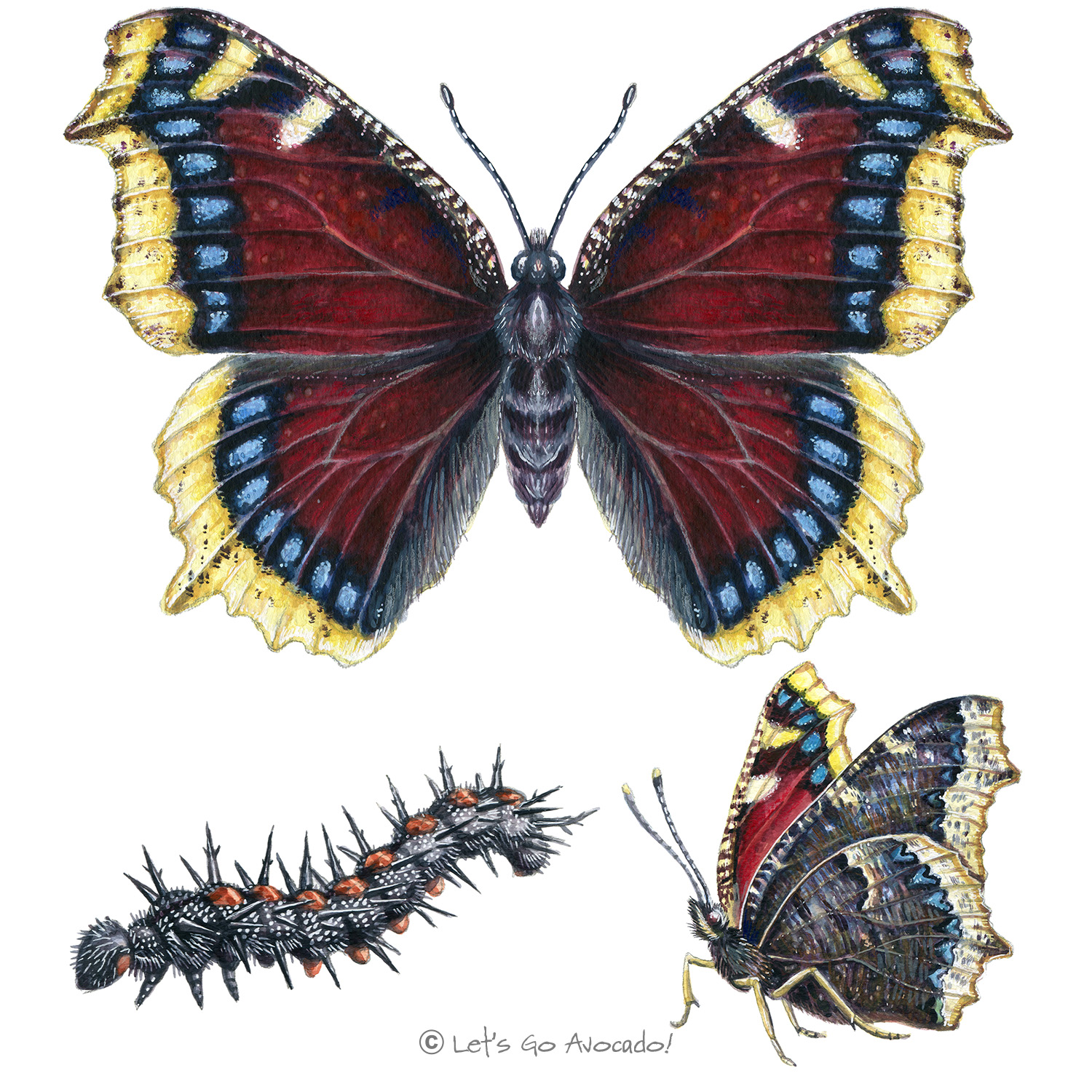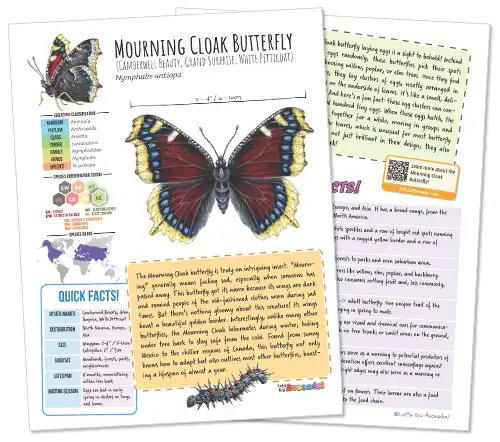

Mourning Cloak Butterfly
Camberwell Beauty, Grand Surprise, and White Petticoat
Nymphalis antiopa
This page may contain affiliate links.
Read our disclosure and privacy policy here.
The Mourning Cloak is a remarkable butterfly known for its velvety wings that resemble a traditional cloak worn during mourning. It’s one of the most widespread and easily recognizable butterflies in North America.
Mourning Cloak Butterfly
Common Name
Other Names
Latin Name
Distribution
Appearance
Size
Habitat
Diet
Lifecycle
Communication
Defense Mechanisms
Ecological Importance
ConservationThe act of protecting and preserving natural resources and the environment. Conservation efforts are important to protect beavers and their habitats. Learn More Status

There’s a lot to explore right where we are, in our own neighborhoods and backyards! Join us while we get off the couch and explore the everyday wonders of nature, science, space, engineering, art, and anything else we stumble upon during on our adventures.








